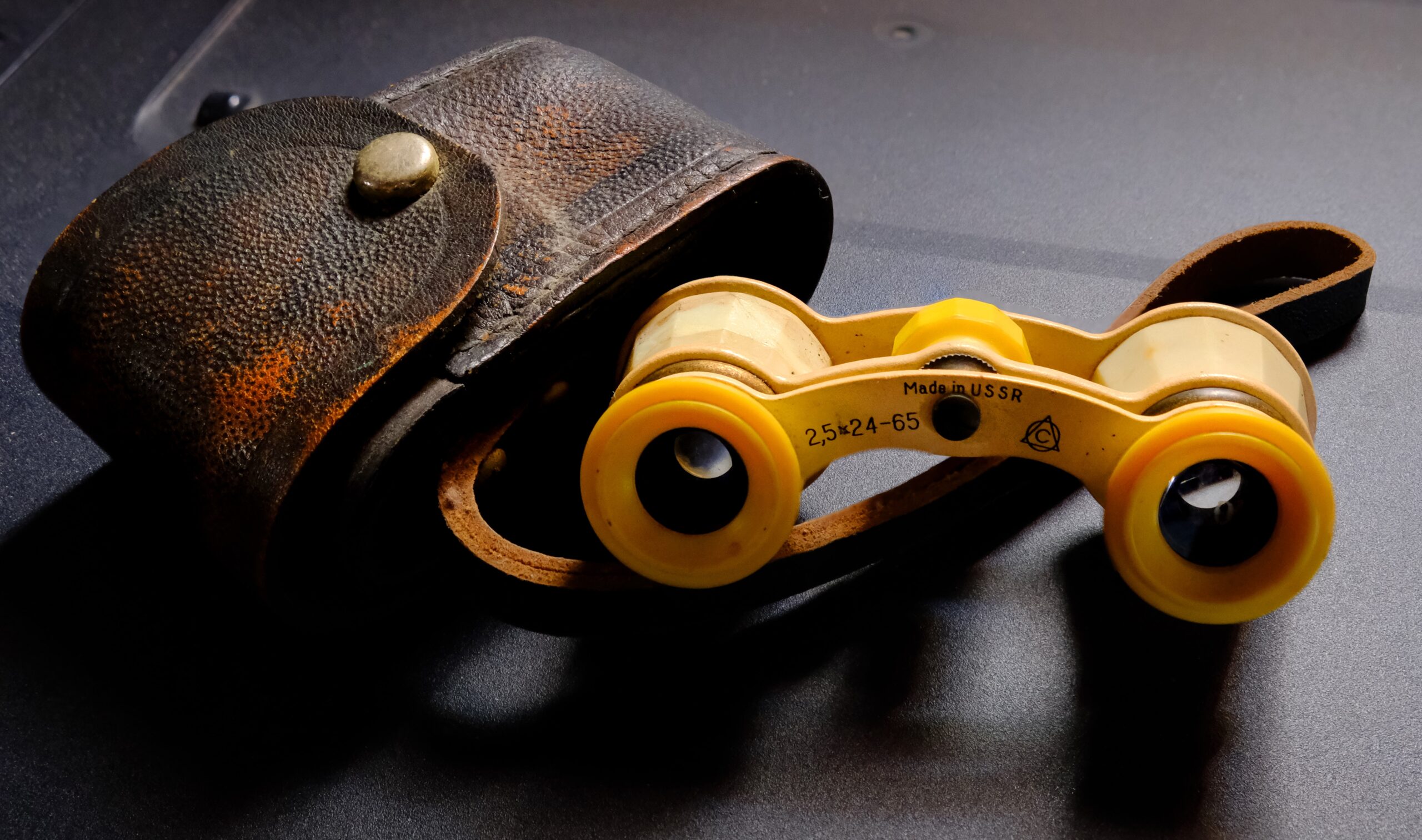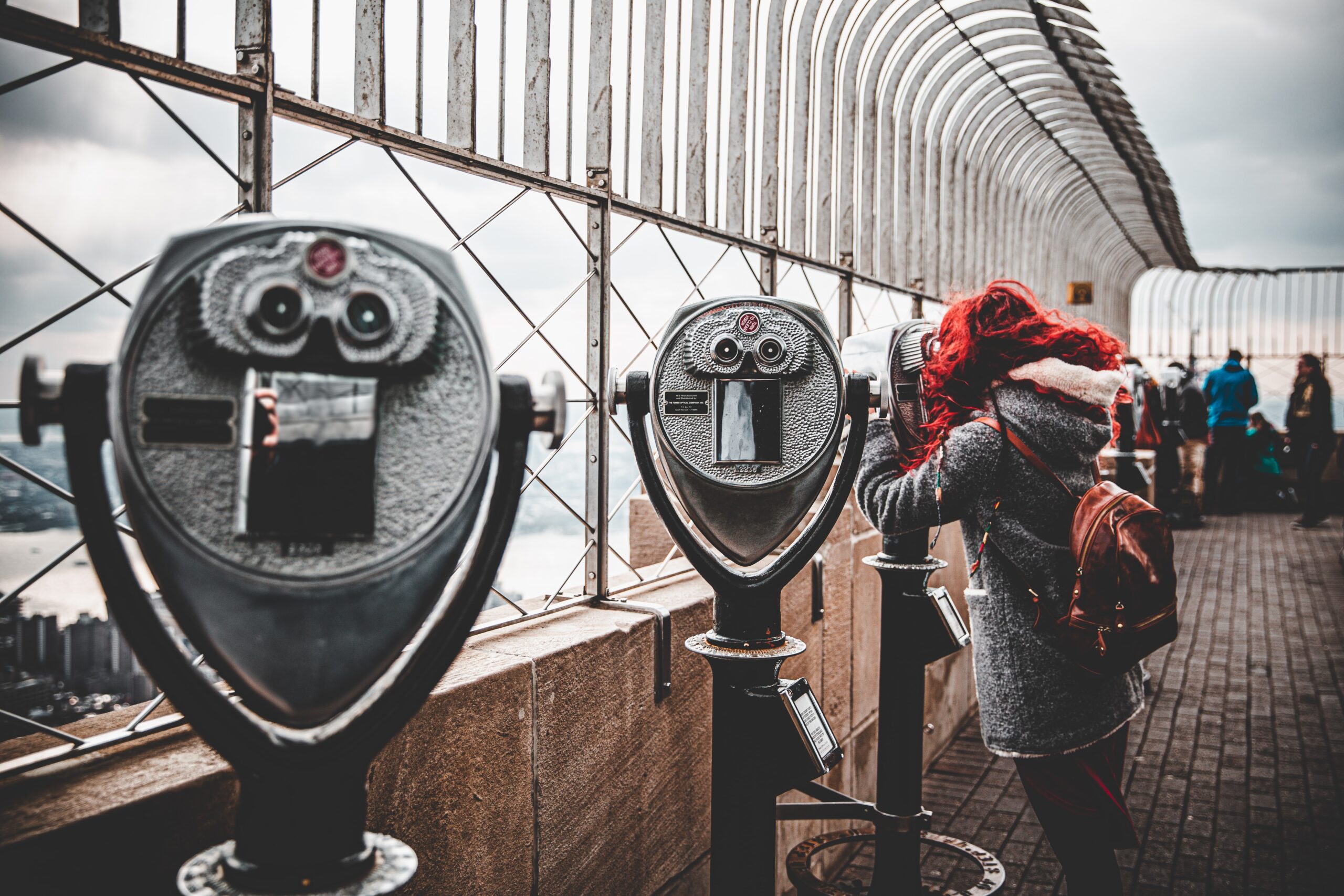Are you in the market for a new pair of binoculars but are unsure which specifications to opt for? Well, fear not because in this article, we will be tackling the age-old question of what is better, 12×50 or 10×42 binoculars. Whether you are an avid birdwatcher or a seasoned traveler, we will be exploring the key differences between these two popular options and helping you make an informed decision. So, grab a cup of tea, sit back, and let’s dive into the wonderful world of binoculars!
Understanding Binocular Specifications
When choosing binoculars, it’s important to understand the specifications and what they mean for your viewing experience. The numbers associated with binoculars refer to two key factors: magnification power and lens diameter. These specifications play a crucial role in determining the capabilities and performance of the binoculars.
What do the numbers mean?
The numbers in binocular specifications are typically written in the format of “magnification power x lens diameter.” The magnification power indicates how much closer the object will appear when viewed through the binoculars. For example, a 10x magnification means the object will appear ten times closer than it would to the naked eye.
The lens diameter, measured in millimeters, refers to the size of the objective lenses at the front of the binoculars. This value affects the amount of light that enters the binoculars, ultimately impacting image brightness and clarity.
Importance of magnification power (10x vs 12x)
The magnification power of binoculars plays a significant role in determining the level of detail you can observe. Higher magnification, such as 12x, allows for closer views of distant objects. This can be beneficial for activities like birdwatching, wildlife observation, or stargazing, where greater detail is desired.
On the other hand, lower magnification, like 10x, provides a wider field of view, making it easier to locate and track moving objects. This can be advantageous in scenarios like sports events or general outdoor observation.
When deciding between 10x and 12x magnification, it’s essential to consider your specific needs and preferences. If you prioritize greater detail and don’t mind a narrower field of view, opt for 12x. However, if wider visibility and ease of use are more important to you, 10x may be the better choice.
Importance of lens diameter (42mm vs 50mm)
Lens diameter plays a critical role in determining the amount of light that can enter the binoculars. A larger lens diameter, such as 50mm, allows more light to enter, resulting in brighter and clearer images, especially in low-light conditions. This can be advantageous for activities like stargazing or observing wildlife at dusk or dawn.
On the other hand, a smaller lens diameter like 42mm may sacrifice some image brightness but offers a more compact and lightweight design, making it more convenient for travel and extended use.
When choosing between 42mm and 50mm lens diameter, consider the lighting conditions in which you’ll be using your binoculars. If low-light performance is crucial, a larger lens diameter will provide better results. However, if portability and convenience are your priorities, a smaller lens diameter may be more suitable.
Examining 12×50 Binoculars
Let’s take a closer look at binoculars with a specification of 12×50. These binoculars offer a magnification power of 12x and a lens diameter of 50mm. Here are some key features of 12×50 binoculars:
General features of 12×50 binoculars
12×50 binoculars provide a powerful magnification, allowing for detailed views of distant objects. The 50mm lens diameter ensures sufficient light gathering capability, resulting in bright and clear images. These binoculars often have a larger size and weight compared to their counterparts with smaller lens diameters.
When to use 12×50 binoculars
12×50 binoculars excel in scenarios where higher magnification is desired, such as birdwatching, wildlife observation, or astronomical viewing. They offer an immersive viewing experience, enabling you to see fine details that may not be visible with lower magnification binoculars.
Pros and cons of using 12×50 binoculars
The advantages of 12×50 binoculars include their ability to provide detailed views of distant objects and their excellent low-light performance due to the larger lens diameter. However, they may have a narrower field of view compared to lower magnification binoculars and can be bulkier and heavier to carry around.

Analyzing 10×42 Binoculars
Now let’s delve into the features of binoculars with a specification of 10×42. These binoculars offer a magnification power of 10x and a lens diameter of 42mm. Here’s what you need to know:
General features of 10×42 binoculars
10×42 binoculars strike a balance between magnification and portability. They offer a moderate level of magnification, providing a clear view of objects while still maintaining a wider field of view. The 42mm lens diameter ensures ample light transmission for brighter images while keeping the overall size and weight manageable.
When to use 10×42 binoculars
10×42 binoculars are versatile and suitable for a wide range of activities. They are well-suited for birdwatching, sports events, nature observation, and general outdoor use. The wider field of view offered by these binoculars allows for easier tracking and locating of moving objects.
Pros and cons of using 10×42 binoculars
The benefits of 10×42 binoculars include their versatility, portability, and wider field of view, which makes them suitable for various activities. They are typically more compact and lightweight compared to binoculars with larger lens diameters. However, they may sacrifice some low-light performance compared to binoculars with larger lenses.
Comparison on Usability
When comparing 12×50 and 10×42 binoculars, several factors come into play that affect usability. Let’s explore how they differ in terms of handling and weight, as well as comfort of use and field of view.
Handling and weight
Due to their larger objective lenses, 12×50 binoculars are generally bulkier and heavier than 10×42 binoculars. This might make them less convenient to carry around for extended periods or during travel. However, if you prioritize optical performance, a slightly larger and heavier binocular might be worth it.
On the other hand, 10×42 binoculars offer a more compact and lightweight design, making them easier to handle and carry. This makes them a popular choice for those who value portability and ease of use.
Comfort of use
The larger size and weight of 12×50 binoculars might affect comfort during prolonged use. Holding them steady for an extended period can be tiring, especially if you don’t have a tripod or steady surface to support them. If you plan on using your binoculars for long periods, it may be worth considering additional support options with 12×50 binoculars.
In comparison, 10×42 binoculars are generally more comfortable to use for extended periods due to their lighter weight and smaller size. They can be easily handheld without causing strain or fatigue.
Field of view comparison
One significant difference between 12×50 and 10×42 binoculars is the field of view they offer. Higher magnification binoculars, such as 12×50, often have a narrower field of view. This means you can see less of the surrounding area, making it harder to track moving objects or observe larger landscapes.
In contrast, the 10×42 binoculars provide a wider field of view, allowing you to capture more of the scene. This can be advantageous in activities that involve fast-moving subjects or situations where a broader perspective is beneficial.

Comparison on Light Transmission and Clarity
When it comes to image quality, the light transmission and clarity of binoculars are crucial factors to consider. Let’s compare how 12×50 and 10×42 binoculars perform in terms of image brightness, color fidelity, and overall image quality.
Image brightness
Due to their larger lens diameter, 12×50 binoculars generally excel in low-light conditions. The wider lens allows more light to enter the binoculars, resulting in brighter images, especially during dawn, dusk, or stargazing. This makes them ideal for activities that require good visibility in dim lighting.
On the other hand, 10×42 binoculars, while still providing good light transmission, might not perform as well in extremely low-light situations. The smaller lens diameter limits the amount of light that can enter the binoculars, impacting their brightness to some extent.
Color fidelity
Color fidelity refers to the ability of binoculars to reproduce colors accurately. Both 12×50 and 10×42 binoculars can offer excellent color fidelity if they are of good quality and use high-quality optics. However, larger objective lenses, like those found in 12×50 binoculars, can enhance color reproduction and provide more vivid and vibrant images.
Overall image quality
Overall image quality combines various factors, including brightness, sharpness, clarity, and color fidelity. While 12×50 binoculars have the potential to provide outstanding image quality, it ultimately depends on the specific model and the quality of the optics used.
Similarly, 10×42 binoculars can also deliver excellent image quality, especially if they are from reputable brands and utilize high-quality optics. It’s important to consider factors beyond just the specifications when evaluating the overall image quality of binoculars.
Comparison on Depth of Field
Depth of field refers to the range of distances at which objects in the view appear in focus. Let’s explore how 12×50 and 10×42 binoculars differ in terms of depth of field.
Understanding depth of field
A larger depth of field means that objects at different distances from the viewer will remain in focus simultaneously. This can be advantageous in activities like birdwatching or observing nature, where different objects may be at various distances.
Depth of field in 10×42 binoculars
10×42 binoculars typically have a slightly larger depth of field compared to 12×50 binoculars. This is due to the lower magnification, which allows for a wider range of distances to be in focus simultaneously. This wider depth of field can make it easier to quickly shift focus between objects at different distances.
Depth of field in 12×50 binoculars
12×50 binoculars, with their higher magnification, have a narrower depth of field compared to 10×42 binoculars. This means objects at different distances will be more challenging to keep in focus simultaneously. However, the higher magnification allows for more detailed observation of individual objects at specific distances.

Water and Fog Resistance
When using binoculars in outdoor environments, it’s important to consider their resistance to water and fog. Let’s compare the water and fog resistance capabilities of both 10×42 and 12×50 binoculars.
Water resistance in 10×42 and 12×50 bins
Water resistance is a significant factor to consider, particularly if you plan to use your binoculars in wet or rainy conditions. Many binoculars, including both 10×42 and 12×50 models, come with water-resistant features to protect them from moisture damage.
Ensure that the binoculars you choose have proper water resistance ratings and seals to prevent water from entering the lenses or body. This way, you can confidently use them even in unfavorable weather conditions.
Fog resistance in 10×42 and 12×50 bins
Fogging of binoculars can occur when there are temperature differences between the inside and outside of the binoculars. This fogging can obstruct your view and make it difficult to use the binoculars effectively. Therefore, it’s crucial to choose binoculars with proper fog-resistant features.
Both 10×42 and 12×50 binoculars can come with fog-resistant coatings or features such as nitrogen purging, which helps prevent fogging of the internal optics. It’s essential to check for these features to ensure clear, fog-free viewing even in challenging weather conditions.
Durability and Build Quality
The durability and build quality of binoculars are essential factors to consider, especially if you plan on using them in rugged or demanding environments. Let’s compare the durability of 10×42 and 12×50 binoculars.
Durability of 10×42 binoculars
10×42 binoculars, with their smaller size and lighter weight, are often more compactly built and easier to handle. However, this doesn’t mean they lack durability. Many high-quality 10×42 binoculars are constructed using durable materials like magnesium alloy or polycarbonate, which can withstand rough handling and outdoor conditions.
To ensure long-term durability, choose binoculars from reputable brands known for their quality craftsmanship and sturdy construction.
Durability of 12×50 binoculars
12×50 binoculars, being larger and heavier, are generally built to be more robust. They often use durable materials and feature stronger housings to withstand rugged use. However, it’s important to remember that not all 12×50 binoculars are created equally.
Check for features like rubber armor, which provides added protection against impacts and shocks, as well as reputable brands with a track record for durable construction.
Price and Value for Money
The price of binoculars can vary widely depending on the brand, quality, and specific features they offer. Let’s compare the price ranges for 10×42 and 12×50 binoculars and evaluate their value for money.
Price range for 10×42 binoculars
Generally, 10×42 binoculars are available in a wide price range, suitable for various budgets. Entry-level models can often be found in the $100-$200 range, while premium options can range from $500 and above.
The price you pay for 10×42 binoculars will depend on factors like the brand, materials used, optical quality, and additional features like image stabilization or advanced coatings.
Price range for 12×50 binoculars
12×50 binoculars tend to be slightly more expensive compared to their 10×42 counterparts. Entry-level 12×50 models can typically be found in the $200-$400 range, while higher-end options can go beyond $1000.
The differences in price stem from the larger lens diameter and higher magnification, which often require more precise and costly optics. Additionally, premium 12×50 binoculars may offer additional features like ED glass or advanced coatings for enhanced image quality.
Which gives better value for money?
Determining which binoculars offer better value for money depends on your specific needs and budget. Both 10×42 and 12×50 binoculars can provide excellent viewing experiences, but the price difference between them represents the added capabilities and specifications of the 12×50 binoculars.
Consider how you plan to use the binoculars, the importance of specific features like magnification power or lens diameter, and the overall quality and reputation of the brand before making a final decision.
Conclusions: Which is Better – 12×50 or 10×42?
After examining the various factors and comparisons, it’s time to draw a conclusion on which is better between 12×50 and 10×42 binoculars. Here’s a summary of the key points and situations where each option excels:
Summary of comparison points
12×50 binoculars offer higher magnification and excellent low-light performance due to their larger lens diameter. They are ideal for activities that require detailed views of distant objects, such as birdwatching or stargazing. However, they can be bulkier, heavier, and have a narrower field of view.
10×42 binoculars strike a balance between magnification and portability. They provide a wider field of view, making them suitable for activities like sports events, nature observation, or general outdoor use. They are generally more compact, lightweight, and offer good overall image quality.
Situations where 10×42 is a better choice
If you prioritize portability and ease of use, 10×42 binoculars are an excellent choice. They are well-suited for activities that involve tracking moving objects or require a wider field of view. Their compact size and lightweight design make them convenient for travel or extended use.
Situations where 12×50 is a better choice
If you require higher magnification and detailed views of distant objects, 12×50 binoculars are the better option. They excel in scenarios like birdwatching, wildlife observation, or stargazing, where clarity and fine detail are crucial. Additionally, their superior low-light performance makes them ideal for low-light conditions.
Ultimately, the decision between 12×50 and 10×42 binoculars comes down to your specific needs and preferences. Consider factors like intended use, portability, image quality, and budget to make an informed choice that suits your requirements.

